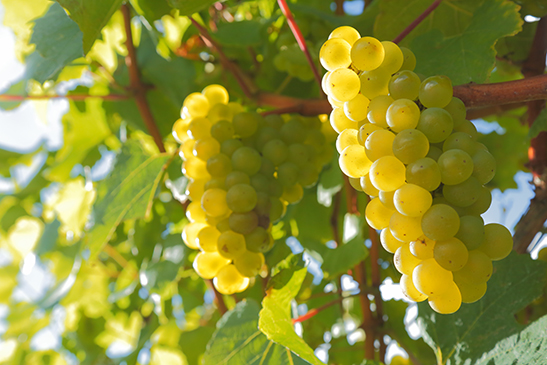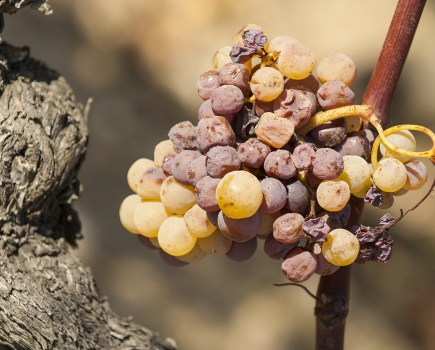Machine harvesting is still relatively uncommon in UK vineyards, but as issues with labour availability continue, so more growers may go down this route in future. Hutchinsons Rob Saunders and Chris Cooper consider what it might mean for vineyard agronomy.
Globally, mechanical harvesting is widely used by many large-scale commercial vineyards, yet among the UK’s diverse range of smaller sites, hand picking remains the dominant route to the presses.
Some winemakers insist hand picking bunches is the only way to achieve the quality required, being gentler on the grapes and vines, especially when growing thin skinned varieties like Pinot Noir. If grapes split, fermentation can begin prematurely in the harvesting bin as juice contacts wild yeast on the outside of berries, and any oxidation will also affect juice quality.
Another reason for hand picking, theoretically at least, is that it allows pickers to select only healthy fruit, leaving behind any that are unripe or have succumbed to diseases; each winemaker has their own quality criteria, but typically consignments with greater than 10% botrytis are likely to be rejected. How effective such quality control is in practice depends on the abilities and training of labour involved.
Perhaps the biggest issue for many UK vineyards, the average size of which is around 4.75 ha, is that the scale of production is simply too small to justify the considerable investment required for buying a new machine outright.
A few larger businesses have made the leap though and contract harvesting services are also starting up that could bring mechanical harvesting to smaller-scale growers if appropriate. We are already seeing greater adoption of mechanical leaf stripping and bunch exposure and an interest in mechanical pruning, so harvesting is a natural progression, and one that will undoubtedly be escalated by ongoing labour availability issues.
Canopy management
Although harvester designs differ, most self-propelled and towed machines work by straddling the rows and shaking grapes off the stem, using flexible rubber or fibre glass rods known as “beater bars”.
They therefore need neat, vertically-trained canopies on post and wire systems, such as the Guyot or Double Guyot training system. Large vines on the Geneva double curtain system are not suitable for machine harvesting.
Trellis systems using metal posts may be better suited as older wooden or concrete posts can be at greater risk of cracking or splitting during the harvesting process.
Good canopy management throughout the season is vital for effective machine operation, and for ensuring bunch development and ripening is as uniform as possible.
Mechanical harvesting is non-selective so the onus is on having the right grapes on the vine by harvest, accentuating the need for a crop that is as clean and uniform as possible. It may be necessary to go through before harvest to manually remove any immature bunches from secondary blooms or diseased bunches to ensure they do not compromise wine quality.
In most cases, a switch to machine harvesting may not require significant changes to agronomy, but it will refocus the skills of the vineyard manager and require attention to detail in every decision made, from pruning, leaf trimming and bunch thinning to nutrition, pest and disease control throughout the season.
Mechanical harvesting can carry an inherent risk of causing occasional damage to canes, particularly in more fragile cultivars, but when growing using a vertical shoot positioning (Guyot type) system a substantial amount of material will be removed anyway. If damage occurs to canes selected to lay down for next year, consider treating with the biofungicide Vintec which contains a strain of fungus (Trichoderma atroviride) that reduces the infection risk from grape vine trunk diseases.
Look after soils
As vineyards become more mechanised, so it will be increasingly important to ensure soils are managed carefully to remove any deep compaction of alleyways and improve the natural resilience of ground to periods of wet and dry weather.
Although harvesters are not particularly heavy machines, there is always a risk of causing damage when travelling on wetter soils, such as those that may occur later in autumn. Cover crops could have a greater role in the future for building natural drainage, structure and soil resilience.
Ultimately deciding whether to go down the machine harvesting route or not depends on many factors, including winemaker requirements, location, accessibility, cost, and the varieties grown. Good agronomy remains paramount though, however the grapes are harvested.
Rob and Chris, along with colleagues, look forward to welcoming you to the Hutchinsons stand at the Vineyard & Winery Show later this month.




